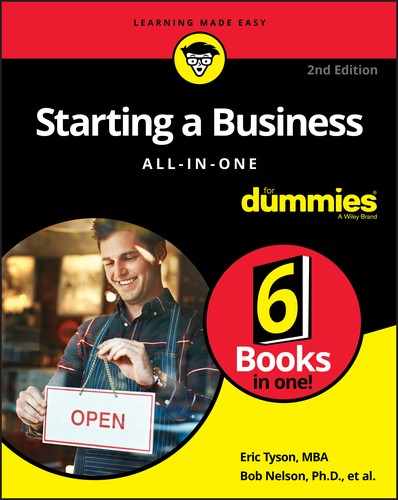Book 3
Handling Your Finances
Contents at a Glance
- Chapter 1: Setting Up the Books
- Bookkeepers: The Record Keepers of the Business World
- Wading through Basic Bookkeeping Lingo
- Pedaling through the Accounting Cycle
- Tackling the Big Decision: Cash-Basis or Accrual Accounting
- Seeing Double with Double-Entry Bookkeeping
- Differentiating Debits and Credits
- Outlining Your Financial Road Map with a Chart of Accounts
- Starting with the Balance Sheet Accounts
- Tracking the Income Statement Accounts
- Setting Up Your Chart of Accounts
- Chapter 2: Reporting Profit or Loss in the Income Statement
- Chapter 3: Showing Financial Condition in the Balance Sheet
- Expanding the Accounting Equation
- Presenting a Proper Balance Sheet
- Judging Liquidity and Solvency
- Understanding That Transactions Drive the Balance Sheet
- Sizing Up Assets and Liabilities
- Financing a Business: Sources of Cash and Capital
- Recognizing the Hodgepodge of Values Reported in a Balance Sheet
- Chapter 4: Reporting Cash Sources and Uses in the Statement of Cash Flows
- Chapter 5: Controlling Costs and Budgeting
- Getting in the Right Frame of Mind
- Getting Down to Business
- Looking into Cost of Goods Sold Expense
- Focusing on Profit Centers
- Reducing Your Costs
- Deciding Where the Budgeting Process Starts
- Homing In on Budgeting Tools
- Preparing an Actual Budget or Forecast
- Understanding Internal versus External Budgets
- Creating a Living Budget
- Using the Budget as a Business-Management Tool
- Using Budgets in Other Ways
- Chapter 6: Satisfying the Tax Man
..................Content has been hidden....................
You can't read the all page of ebook, please click here login for view all page.
